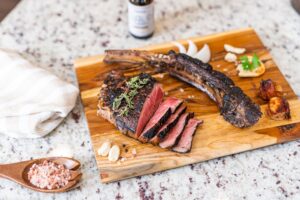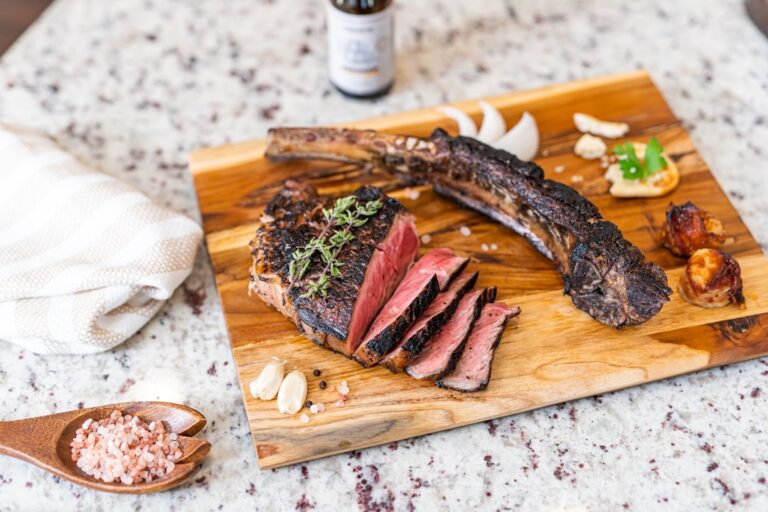Bread has been a fundamental component of German cuisine for centuries, with a history dating back to the early agricultural era. The tradition of bread making in Germany can be traced to the ancient Romans, who introduced wheat cultivation to the region. Over time, German bakers developed unique recipes and techniques, resulting in the diverse array of breads enjoyed in Germany today.
During the Middle Ages, bread became integral to daily life in Germany, with regional variations emerging. Northern regions favored rye flour, leading to the creation of hearty rye breads still popular today. Southern regions predominantly used wheat flour, often incorporating spices and seeds for enhanced flavor.
The 19th-century industrial revolution significantly impacted German bread production. The invention of steam-powered mills and commercial yeast increased efficiency and output. This led to the standardization of recipes and the emergence of large-scale bakeries, which produced a wider variety of breads to meet growing demand.
Despite these changes, many traditional German bread recipes and techniques have been preserved and remain valued in contemporary German culture.
Key Takeaways
- German bread has a rich history dating back to the Middle Ages, with over 300 different types of bread being produced in the country.
- Traditional German bread recipes often include rye flour, sourdough, and a variety of seeds and grains, resulting in hearty and flavorful loaves.
- Modern German bread variations include gluten-free options, artisanal breads, and innovative flavor combinations to cater to diverse tastes.
- Tips for baking authentic German bread include using high-quality ingredients, allowing for a long fermentation process, and baking in a steamy oven for a crispy crust.
- German bread is known for its health benefits, such as being high in fiber, vitamins, and minerals, and having a low glycemic index. It is also often easier to digest than other bread types.
Traditional German Bread Recipes
Classic Vollkornbrot
One of the most iconic German breads is the classic Vollkornbrot, a dense and dark whole grain bread made with rye flour and often mixed with seeds such as sunflower, pumpkin, or flax. This bread is typically fermented for an extended period of time, which gives it a deep, complex flavor and a moist, chewy texture.
Roggenbrot: A Traditional Rye Bread
Another popular German bread is the Roggenbrot, a traditional rye bread that is slightly lighter in color and texture than Vollkornbrot. Roggenbrot is often made with a combination of rye and wheat flours, resulting in a slightly milder flavor and a softer crumb. It is commonly enjoyed with savory toppings such as cheese, cold cuts, or pickles.
Pumpernickel: A Global Favorite
Pumpernickel is another well-known German bread that has gained popularity around the world. This dense and dark bread is made from coarsely ground rye flour and is typically baked at a low temperature for an extended period of time, resulting in a rich, caramelized flavor and a moist, chewy texture. Pumpernickel is often sliced thinly and served with smoked fish or cured meats as part of a traditional German breakfast or snack.
Modern German Bread Variations

While traditional German bread recipes continue to be cherished, modern bakers in Germany have also embraced innovation and creativity, leading to a wide variety of new and exciting bread variations. One popular modern twist on traditional German bread is the addition of ancient grains such as spelt, einkorn, or emmer. These grains are known for their nutty flavors and nutritional benefits, and they add a unique depth of flavor and texture to breads.
Another modern trend in German bread baking is the use of sourdough starters to leaven the dough. Sourdough breads have gained popularity for their tangy flavor and chewy texture, as well as their potential health benefits. Many German bakers are experimenting with different types of sourdough starters and fermentation techniques to create new and interesting sourdough breads that pay homage to traditional German baking methods while incorporating contemporary flavors and ingredients.
In addition to experimenting with new grains and fermentation methods, modern German bakers are also exploring different shapes and forms for their breads. Artisanal bakeries in Germany are known for their creative and visually stunning bread designs, from intricately scored loaves to decorative braided breads. These modern variations not only showcase the skill and artistry of the bakers but also add an element of excitement and novelty to the world of German bread.
Tips for Baking Authentic German Bread
| Tip | Description |
|---|---|
| Use Rye Flour | Authentic German bread often uses rye flour for its distinct flavor and texture. |
| Sourdough Starter | Many traditional German bread recipes use a sourdough starter for added flavor and rise. |
| Long Proofing Time | Allow the dough to proof for an extended period to develop the characteristic texture and flavor. |
| Steam in Oven | Creating steam in the oven during baking helps to develop a crispy crust. |
| Use Bread Improver | Adding bread improver can help achieve the desired texture and rise in the bread. |
Baking authentic German bread at home requires attention to detail and a respect for traditional techniques. One key aspect of German bread baking is the use of high-quality ingredients, including flour, grains, and seeds. When possible, seek out organic or locally sourced ingredients to ensure the best possible flavor and nutritional value in your bread.
Another important factor in baking authentic German bread is the fermentation process. Many traditional German breads require a long fermentation period, which not only develops complex flavors but also improves the digestibility of the bread. Take your time when making German bread and allow the dough to ferment slowly for optimal results.
In addition to using high-quality ingredients and allowing for proper fermentation, it’s essential to pay attention to shaping and scoring your loaves. Traditional German breads often have distinctive shapes and patterns that not only enhance their appearance but also contribute to their texture and crust development. Practice shaping and scoring techniques to achieve the characteristic look of authentic German bread.
Health Benefits of German Bread
German bread is not only beloved for its delicious flavors and textures but also for its potential health benefits. Many traditional German breads are made with whole grains such as rye, spelt, or ancient grains, which are rich in fiber, vitamins, and minerals. These whole grains have been linked to improved digestive health, reduced risk of chronic diseases such as heart disease and diabetes, and better weight management.
The long fermentation process used in many traditional German bread recipes also contributes to their healthfulness. Fermentation helps break down gluten and phytic acid in the grains, making them easier to digest and allowing for better nutrient absorption. Additionally, sourdough fermentation has been shown to increase the bioavailability of certain nutrients such as iron and magnesium in bread.
Furthermore, the use of natural sourdough starters in many traditional German breads adds beneficial bacteria to the dough, which can support gut health and overall immune function. These probiotic-rich breads may help maintain a healthy balance of gut flora and contribute to overall well-being.
Pairing German Bread with Accompaniments

Traditional German-Style Breakfast or Snack
One classic pairing is hearty German bread with a selection of cold cuts, cheeses, pickles, and mustard for a traditional German-style breakfast or snack known as “Brotzeit.” The combination of savory meats and cheeses with tangy pickles and spicy mustard complements the robust flavors of German bread perfectly.
Sweet Treats with German Bread
For a sweet treat, German bread can be enjoyed with a variety of spreads such as fruit preserves, honey, or nut butters. The nutty flavors of whole grain German breads pair particularly well with creamy almond or cashew butter, while the tangy sweetness of fruit preserves adds a delightful contrast to the hearty texture of the bread.
Open-Faced Sandwiches and Creative Combinations
German bread can also be used as a base for open-faced sandwiches known as “Stulle” or “Bauernstulle,” which are typically topped with a variety of ingredients such as smoked fish, eggs, vegetables, or spreads. These creative combinations allow for endless possibilities when it comes to enjoying German bread as part of a satisfying meal or snack.
Where to Find Authentic German Bread Ingredients
When it comes to baking authentic German bread at home, sourcing high-quality ingredients is essential. Many specialty grocery stores or international markets carry a selection of German flours, grains, seeds, and other baking ingredients that are essential for creating traditional German breads. Look for organic or artisanal products whenever possible to ensure the best flavor and quality in your homemade German bread.
In addition to specialty stores, online retailers can be a great resource for finding authentic German bread ingredients. Many online shops offer a wide range of German flours, grains, seeds, and other baking supplies that can be delivered directly to your door. This can be especially helpful if you live in an area where it’s difficult to find specific German ingredients locally.
For those who are passionate about baking authentic German bread at home, consider seeking out local farmers or millers who specialize in growing or processing traditional grains such as rye or spelt. Building relationships with these producers can not only provide you with access to high-quality ingredients but also support sustainable agriculture practices and local food systems. In conclusion, German bread has a rich history and diverse range of traditional recipes that continue to be cherished today.
From hearty rye loaves to modern sourdough variations, German bread offers a wide array of flavors and textures that can be enjoyed in countless ways. By understanding the history of German bread, learning traditional recipes, exploring modern variations, and sourcing authentic ingredients, anyone can experience the joy of baking and savoring delicious homemade German bread.
If you’re looking for some authentic German bread recipes, you should check out this article on Toad Frog Crafts. They have a great selection of traditional German bread recipes that are sure to satisfy your cravings for delicious, homemade bread. Whether you’re looking for a classic rye bread or a hearty whole grain loaf, you’ll find plenty of inspiration and guidance in their collection of recipes. So roll up your sleeves and get ready to bake up some mouthwatering German bread!
FAQs
What are some traditional German bread recipes?
Some traditional German bread recipes include rye bread (Roggenbrot), pumpernickel, pretzels (Brezeln), and various types of wheat bread such as Vollkornbrot and Mischbrot.
What are the key ingredients used in German bread recipes?
Key ingredients used in German bread recipes include rye flour, wheat flour, yeast, salt, water, and sometimes malt or sourdough starter.
What is the typical texture of German bread?
German bread is known for its hearty and dense texture, often with a chewy crust and a moist, flavorful crumb.
Are there any specific techniques or methods used in German bread baking?
German bread baking often involves longer fermentation times, the use of sourdough starters, and the inclusion of various seeds and grains for added texture and flavor.
What are some popular variations of German bread recipes?
Some popular variations of German bread recipes include adding seeds such as sunflower, pumpkin, or flax seeds, as well as incorporating different types of grains like spelt or oats.
What is the significance of bread in German culture?
Bread holds a significant place in German culture, with a wide variety of breads being enjoyed as a staple food in everyday meals. It is often seen as a symbol of German craftsmanship and tradition.























+ There are no comments
Add yours